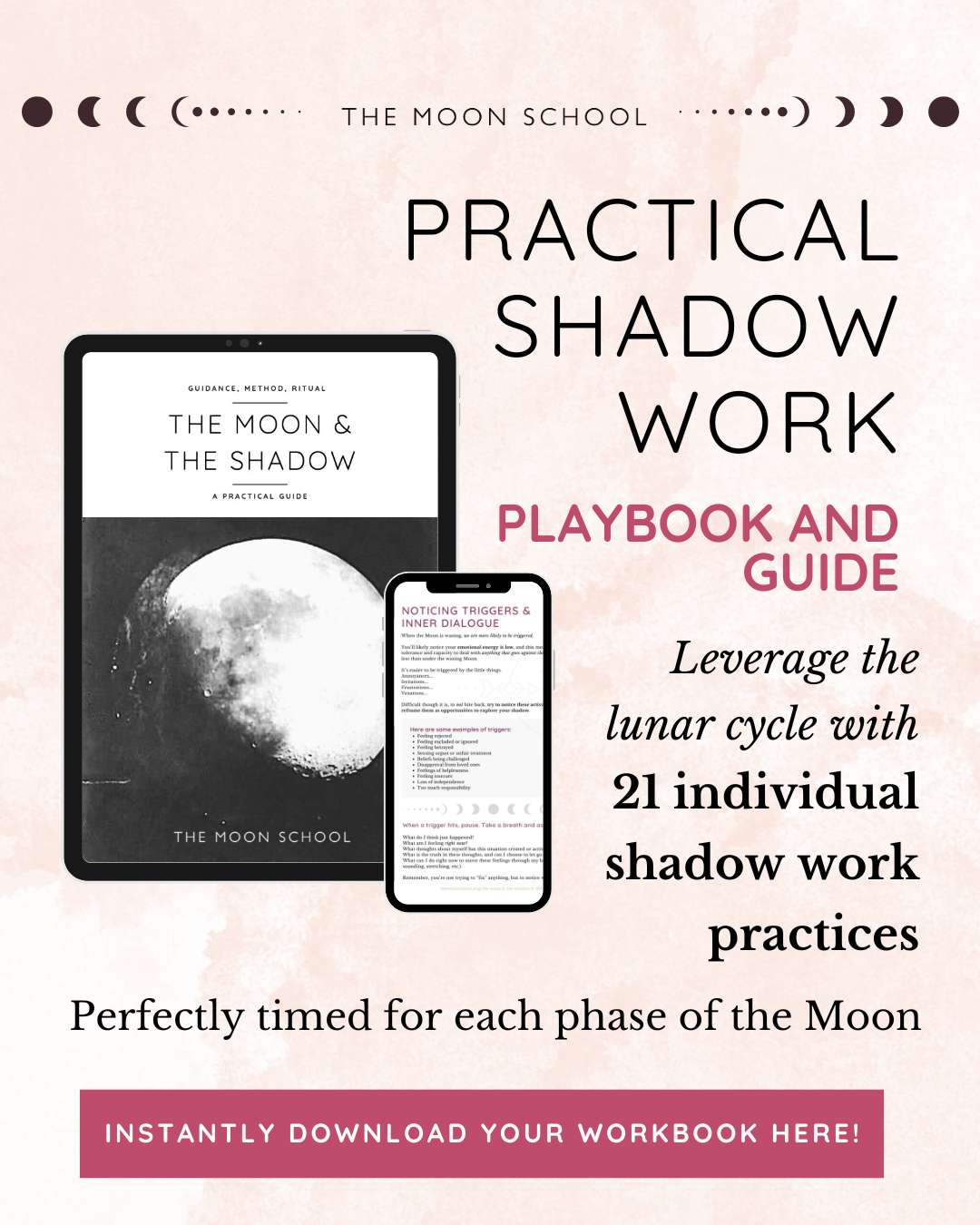Don’t be scared…! Your shadow self is the portal to everything you desire…
Have you ever felt like there’s a part of you that you don’t fully understand? Do you sometimes act in ways that seem out of character or contradictory to your beliefs and values?
If so, it could be your shadow self coming out to play…
What is the shadow self?
Your shadow self is the part of your psyche that contains all the unconscious aspects of your personality that you reject or deny. It’s the part of you that you don’t like to acknowledge, the negative traits or emotions that you try to hide or suppress.
The term shadow self was created by Swiss psychoanalyst Carl Jung.
Overall, Jung identified 4 main archetypes – the ego, the anima/animus, the shadow, and the Self (capital ‘S’).
The shadow self refers to the part of your unconscious mind that contains all of the qualities and traits that you don’t want to acknowledge or accept about yourself. These could be things like anger, jealousy, greed, or even sexuality.
These kinds of qualities maybe seen as “dark” or negative, by ourselves, our families, or society as a whole. So we try to repress them because they don’t fit with the image of ourselves that we want to present to the world.
According to Jung, the shadow self is formed early in life as we begin to develop our persona, or the mask that we wear to interact with others. We learn which qualities are acceptable and which are not based on the reactions we get from those around us.
The parts of ourselves that are not accepted by others become part of our shadow self.
It’s important to understand that the shadow self is not inherently bad or evil. It’s simply made up of the parts of ourselves that we have repressed. Facing and accepting these aspects of our personality would just be too uncomfortable or unacceptable.
Yet by acknowledging and accepting our shadow self, we can become more whole and integrated individuals.
How to identify your shadow self
The very nature of the shadow self means that it’s hidden in the unconscious.
Holed up in the darkest corners of the psyche, our shadow traits exist in those places we usually fear to tread. So if we don’t actually want to go there… how can we find, discover, and identify our shadows?
6 ways you can identify the shadow self…
Without waiting until you’re triggered, out of control, and taken by surprise, how can you access your unconscious, and meet your shadow?
Here are 6 amazing ways to access your shadow self. They have been adopted and adapted from the late Molly Tuby’s suggestions which are so easy and straightforward to spot.
These methods also require very little deep diving at this point, making them excellent places to begin your journey into the shadow.
The best 6 ways for meeting the shadow self are through:
- Exaggerated feelings,
- Negative reflections you get from others
- Relationship patterns
- Impulses
- Judgements of others
- Shame
1. In exaggerated feelings
Your shadow often lurks in the exaggerated and extreme feelings you have about other people.
This means that she’ll show herself to you in the way your emotional body rises up to greet someone in a not-so-flattering way. Think of this less as judgement, and more as an impulsive reaction that feels very automatic.
When you see a girl in a too-short skirt or a helluva lot of makeup and think “How can she possibly go out like that?!” Or observe someone out in the street doing something you judge as not okay and sign under your breath “What on earth does he think he’s doing?”.
This can be especially clarifying if you’re the only person who has this reaction. If you’re with others who are wholly unaffected by these people doing things that you deem so unreasonable or outrageous, this is likely your personal shadow emerging.
2. Through negative mirrors from other people
Do people often pick up the very same details about your behaviour, and call you out on them?
“Oh, you always say that when I….”
“You often treat me in X way…”
Especially if this happens with more than just one person – so the mirror doesn’t just come from your partner, but from a colleague, a parent AND a sibling too. Then this mirror probably has more to do with you and your shadow, than it does with them.
3. In the repeating patterns showing up in your relationships
From the big, blaring patterns to the tiny little ones, most people have ways of being in situations that keep on showing up for them, forming patterns.
Maybe you keep having the same sticky argument with your partner?
Or your relationship with a sibling always tends to break down when you hit the same niggle?
It may feel very much like these patterns are caused by the other person. Or by the situation you keep finding yourselves in (hello blame game!) But in fact, even if the environment IS your container, YOU are the one playing this out repeatedly, and it’s likely that your shadow twin has a leading role.
4. Via your impulses
Do you often almost say something out loud?!
…Or actually say it and then wish you could take it back?
Or do something mean or vindictive in a moment of spite or frustration?
Or maybe lash out at someone or something in an angry burst….?
Well you’re NOT alone and you’re not going crazy… These impulsive acts are actually your shadow self-revealing herself to you.
But instead of regretting what you’ve said and done (ok, maybe a little regret can be a good thing if it was particularly awful 😬 ) try to see this impulsive action as a chink that you can learn from.
What you were acting in impulse about, i.e. what triggered you, is your meeting point with your shadow.
5. How and when you judge other people
We all do it!
Even the most enlightened folks can fall into this trap of disapproval of others. When it’s exaggerated disapproval then it can be an even surer sign that your shadow self is emerging…
How often have you been sitting on the sidelines (hiding behind your phone, ahem) watching what other people are doing, and pointing out their faults? It’s a defence mechanism for sure – a way to make ourselves feel better, but honestly, this is often your shadow emerging.
She does this to draw attention to the disowned (previously judged) parts of you.
The parts that make up HER.
6. Through shame and humiliation
Ok, this is a big one. Especially for women.
As the Sacred Feminine rises on our planet, a LOT of shame is also rising. It’s unavoidable, and the way this is cleared is through each and every one of us.
I’ll say that again: the way we clear the collective shadow is through each and every one of us.
So before you berate yourself with your own sense of shame… these feelings are coming through for all of us. The stories are our own, but the narrative is global.
Where you feel shame is a big, big indicator of where your shadow lies. The size of the unbearableness you feel around this, is pretty much equal to the size of yourself that is lying in shadow. But this is ALSO equal to the amount of latent power you hold there.
The dark side of your shadow self…
You’ll likely hear the shadow self described as “the dark side of your psyche”. The reason for this is that the shadow self is a mystery to most people – it’s a realm of unknown traits, qualities and characteristics.
Plus, when you start exploring your shadow self, you will likely come across aspects of yourself that you don’t like (you’ve rejected them for so long, after all).
We know that the shadow self is often associated with ‘negative’ emotions and behaviors such as anger, rage, envy, and hatred. our society sees these emotions as weak, dangerous, and unacceptable, especially in women. And because we all need to belong in society (to a certain degree!) we tend to suppress them, pushing them away from the ideal we hold, of our conscious self.
Suppression of the shadow has usually been going on for many, many years. Likely decades, probably even generations.
However, it is important to acknowledge and eventually embrace these aspects of yourself to achieve a sense of wholeness.
Is shadow work dangerous?
Exploring your shadow self can be a dangerous journey, and it is important to approach it with caution. You may come across aspects of yourself that you find disturbing or dangerous, and this can be very challenging. Because your shadow self represents the unknown parts of yourself that you haven’t yet explored, you may be confronted by things that concern you.
But I believe it’s worth the potential challenges. And by taking it slowly and gently, and staying full of compassion for yourself, any risk can be minimized.
Read this post next: Is Shadow Work Dangerous?
Unleashing the potential of your shadow self
It is important to remember that your shadow self is not all negative. It also contains positive aspects of yourself that you may have suppressed.
Your shadow can also hold the potential for growth, creativity, and unique gifts you never knew you had! For example, your shadow self may hold the key to your passion, your intuition, or a musical talent.
The part of your shadow self that holds raw potential is called the golden shadow.
Just as so-called ‘negative’ traits are disowned and pushed into the unconscious, so are some of our most positive, shiny, and valuable traits! This happens surprisingly commonly – in fact most of us have golden shadows that we’re entirely unaware of.
By acknowledging and embracing these traits, you can tap into your full potential and become a more whole and balanced person.
And because your shadow self contains the parts of you that are different and unconventional, you can become more unique and authentic through doing shadow work. This can help you to stand out from the crowd, to express yourself more fully, and to make a positive impact on the world.
New to shadow work?
Check out this beginners guide and workbook – The Moon and the Shadow
How to work with your shadow self
Working with one’s shadow self is essentially what’s known as “shadow work”.
It can be a challenging but ultimately rewarding process of self-discovery and growth. Here are the basic steps to take, to work with your shadow self:
1. Acknowledge the existence of your shadow self: The first step towards working with your shadow self is to simply acknowledge its existence. You must recognize that there are parts of yourself that you may not be aware of or may not want to acknowledge. (And the fact that you’re reading this article means you’re on the path!)
2. Identify your shadow self: The next step is to identify the aspects of yourself that make up your shadow self, including negative emotions, thoughts, beliefs, and behaviors that you may have been suppressing or denying. That’s what this article is all about.
3. Accept your shadow self: Accepting your shadow self means acknowledging that these aspects of yourself are a part of you and that they are not inherently good or bad. This can be a difficult step, as it may require confronting parts of yourself that you may not like or that make you feel uncomfortable.
4. Explore your shadow self: Once you have accepted your shadow self, it’s time to explore it further. This can involve journaling, therapy, somatic work or other forms of self-reflection to better understand the origins and motivations behind your shadow self.
5. Integrate the shadow self: The final step is to integrate your shadow self into your overall sense of self. This means recognizing that your shadow self is a part of you and that it can be harnessed for personal growth and development.
Written out in steps like this can make shadow work seem pretty simple. And it is… Yet working with your shadow self can be an extremely challenging process!
But the rewards are great.
Here are a few more articles to read to continue your own journey into shadow work –
The power of acceptance and self-compassion in shadow work
When it comes to finding your shadow self, one of the most important steps is to practice self-compassion and acceptance. This means acknowledging and embracing all aspects of yourself, including the parts that you may not be proud of or that you try to hide.
Self-compassion involves treating yourself with kindness, warmth, and concern, just as you would treat a good friend. This can be especially challenging when it comes to the shadow self, as it often involves confronting difficult emotions and experiences. However, by offering yourself compassion, you create a safe space for healing and growth.
Acceptance is also a crucial component of shadow work. This means recognizing and acknowledging all parts of yourself, without judgment or criticism. It can be tempting to try to push away or ignore certain aspects of yourself, but this is what created your shadow in the first place! So it will only lead to further pain and disconnection.
Instead, try to approach your shadow self with curiosity and openness. Ask yourself what lessons you can learn from these darker aspects of yourself, and how you can integrate them into your life in a healthy way.
Remember that self-compassion and acceptance are ongoing practices, and it’s okay to make mistakes or struggle at times. Be patient with yourself, and remember that growth and healing take time.






